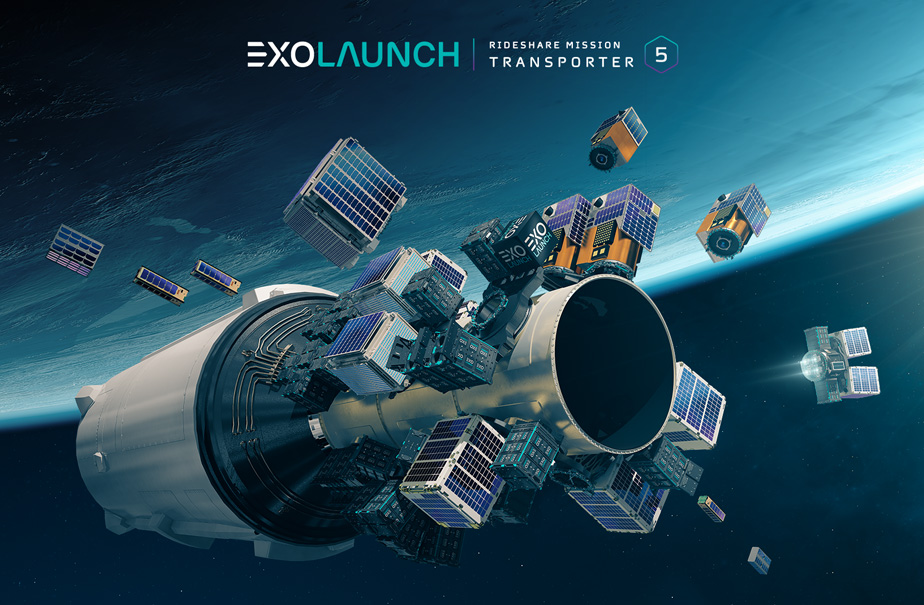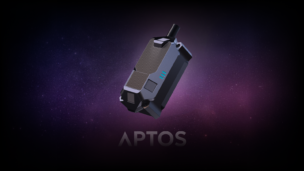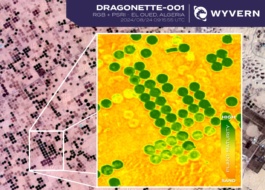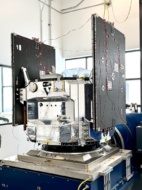What’s it like micromanaging a SpaceX rideshare? Well, let’s find out…
Exolaunch is providing launch and deployment services for 21 satellites aboard today’s SpaceX Transporter-5 mission, which is set to lift off at roughly half past 2 Eastern. Exolaunch provides launch services, makes separation systems, and has certainly earned frequent flier status with SpaceX.
The German company, which spun out of the Technical University of Berlin in 2013, has deployed 210 satellites to date (82% cubesats, 18% microsats).
Ahead of today’s mission, Payload caught up with Kier Fortier, director of launch at Exolaunch USA, over email.
Find the full Q+A below. NB: This interview was lightly edited for clarity and length.
You’re in crunch time for Transporter-5. What are the highlights of your upcoming rideshare mission?
Transporter-5 is our biggest mission yet, in terms of the overall payload mass. We are providing launch and deployment services for 21 satellites across multiple ports.
It’s our fifth Transporter mission with SpaceX and 16th mission in total. We have nine CarboNIX separation systems for microsatellites onboard, as well as several cubesat deployers with cubesats up to 16U. With our EXOport adapter, we can optimize the space available on a SpaceX port and provide the best technical and commercial value for our customers.
On this launch, we are debuting our newest EXOpod cubesat deployer named Nova. Nova increases the allowable satellite mass by up to 30% and the available side panel volume by 4X, compared to traditional cubesat deployers. It also enables smallsat manufacturers to keep launch costs low while building larger, heavier, and more capable cubesats. Nova was developed under a multi-launch agreement with Spire.
After Transporter-5, how many payloads and total mass will you have flown on Transporter missions?
We are proud to say we’ve been on every Transporter mission to date. We’ve now launched well over 100 satellites on the SpaceX rideshare missions and a total mass of ~4,000 kg. 21 more satellites will be deployed on Transporter-5. And we are already preparing for Transporter-6, Transporter-7, and beyond.

What did you learn from the Transporter-4 mission? What were the biggest constraints associated with flying with Chat many users?
As with any complex mission, the biggest challenge is to make sure all of the pieces come together… I think we are always learning and striving to make the overall launch process as smooth and turnkey as possible for our customers. Even though Transporter-4 only launched last month—if you can believe it—we’ve already implemented new improvements to our processes and equipment. We’ve increased the performance of CarboNIX and upgraded ground operations to streamline the process from the day our equipment leaves the factory to launch.
Step by step, we’re getting to the point where we’re able to launch at least a ton of payloads on every single mission.
How has your experience been flying with Falcon 9? Are you in talks with SpaceX about Falcon Heavy or even Starship at this point?
SpaceX and Falcon 9 have been an absolute pleasure to work with. It’s no secret that the launch schedule SpaceX is maintaining is truly unprecedented and we are happy to be a part of it. I’ll defer to SpaceX about Starship, but we are excited to launch on both Falcon Heavy and Starship in the future. I am confident that our history of success and executing successful missions for our customers will provide the necessary experience to allow continued success on these larger vehicles.
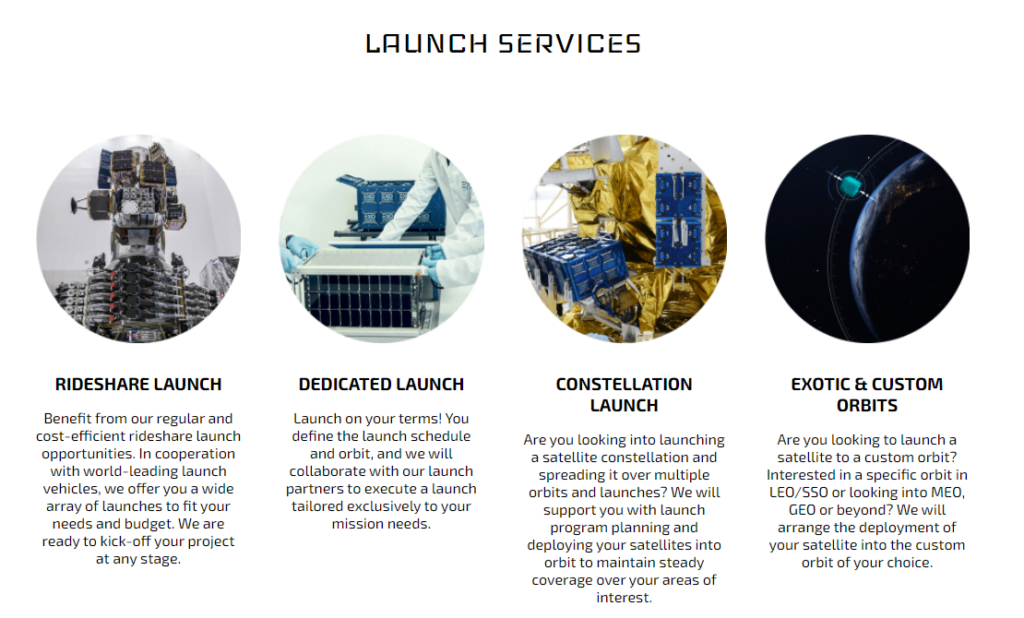
What are your most popular A) separation systems and B) services?
Our most popular product is definitely CarboNIX, our separation system for microsats. It comes in sizes ranging from 8” to 24” diameters and provides a low shock and low tip off rate for our microsats from 10 kg to 400kg. CarboNIX has been used by many of the leading microsat constellation companies, such as ICEYE, Satellogic, Loft Orbital, and Planet. CarboNIXes have deployed 30 microsats, with more to come. Our industry-leading cubesat deployers EXOpods have deployed 145 cubesats up to 16U to date with many more deployments later this year and beyond.
As far as services go, we provide a turnkey mission management service that allows our customers to focus on their satellite development. We handle all of the key launch-related tasks: adapter design, manufacture and qualification, the planning and management of customer test campaigns, and the combining of all of our customers into individual deliverables packages. Putting missions together like this is the way we’re able to offer such great pricing and flexibility. And we perform these tasks with a high level of customer service.
Are you still launching with Soyuz?
All our launch efforts are currently focused on Falcon 9, the European middle-class launch vehicles, and several new small launchers in the US and Europe.
Is every mission you’ve managed bespoke, or are you ever able to take a standardized approach across different customers?
It is a little bit of both actually.
Our separation systems are all standardized and compatible with the SpaceX interfaces and our EXOport adapter. This allows us to mix and match cubesat and microsat payloads on a SpaceX port, according to the overall demand for the mission…though customer-specific modifications are always possible.
As you scale up from deploying a cubesat to a microsat, are you retiring or adding risks? How so?
We’ve been launching microsats for nearly a decade at this point. We’ve discovered that there are pros and cons to both satellite form factors.
Cubesats are great because they’re extremely flexible and customers can find launch opportunities even very close to the launch. Being fully containerized, cubesats also have reduced testing requirements, which can be perfect for companies that want to build and iterate quickly.
However, there comes a point where payloads simply are too large to fit in the box, at which point it’s necessary to scale up to the improved capability and performance that a microsatellite platform can offer.
How is Reliant development going? Is your flight heritage a factor that helps in selling the OTV’s service to customers? [Note: Reliant = Exolaunch’s forthcoming orbital transfer vehicle, or OTV].
We’re planning to issue some big announcements on Reliant soon. For now, we can confirm that we are deep in development and making great progress for the first mission of Reliant next year.
We certainly believe that our flight heritage of 210+ successful deployments to date, our outstanding customer portfolio, and a lot of trust from the industry set us apart. Our OTV is designed around our separation systems that we develop in-house. Their reliability is definitely a core tenant of the Reliant development.
Is the goal with Reliant still to clean up debris after deploying customers’ satellites? Wouldn’t that eat into your margins?
First, we will focus on the last-mile delivery for our smallsat customers. For the gap between small launch vehicles and rideshare missions, Reliant will be able to place satellites in specific orbits so that they can begin their mission ASAP in an orbit that optimizes the overall performance of their constellation.
That said, we believe that we must do our part to be a responsible space actor in order to ensure a safe and prosperous space economy for all. Reliant 2.0, let’s call it, will have the added debris mitigation capabilities.
Any comment on the semi-recent news that Spaceflight Inc. and SpaceX will no longer work together?
No comment, this has no impact on our program with Falcon 9.
Do you worry at all about the platform risks of riding with one provider (SpaceX)?
I’ll go out on a limb here and say that the benefits of launching with SpaceX far outweigh the risks. Falcon 9 is a great vehicle at an extremely competitive price, and has become the new benchmark for SSO [Sun-synchronous orbit] rideshare for smallsats. That said, we have agreements with all of the leading launch providers and are very excited to work with them as requested by our customers. In the end, we strive to provide our customers with the most options to get to space.
